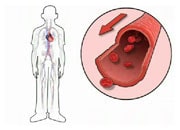Stenting
Why is it done?
In cardiology, a stent is a tiny mesh tube made of artificial materials that acts as a kind of scaffolding to hold open an artery that has become blocked. Stenting increases the likelihood that your artery remains dilated or unblocked after a percutaneous coronary intervention (PCI) procedure.
What does it involve?
A fine, flexible, hollow tube (catheter) with a small inflatable balloon at its tip is passed into an artery in either your groin or arm and directed to your heart using X-ray screening. Once it reaches the narrowed or blocked section, the balloon is inflated to briefly open up the artery and restore blood flow. The stent is then inserted. Once the balloon is deflated and removed, the stent remains in the artery. All patients will require anti-thrombotic medicines after the procedure to prevent blood clots.
Questions to ask your doctor:
- What are the risks associated with the procedure?
- Will I have to stay in hospital?
- What do I need to do to prepare for the procedure?
- Will I have a local or general anaesthetic?
- Will I have to take additional medicines after the procedure?




















